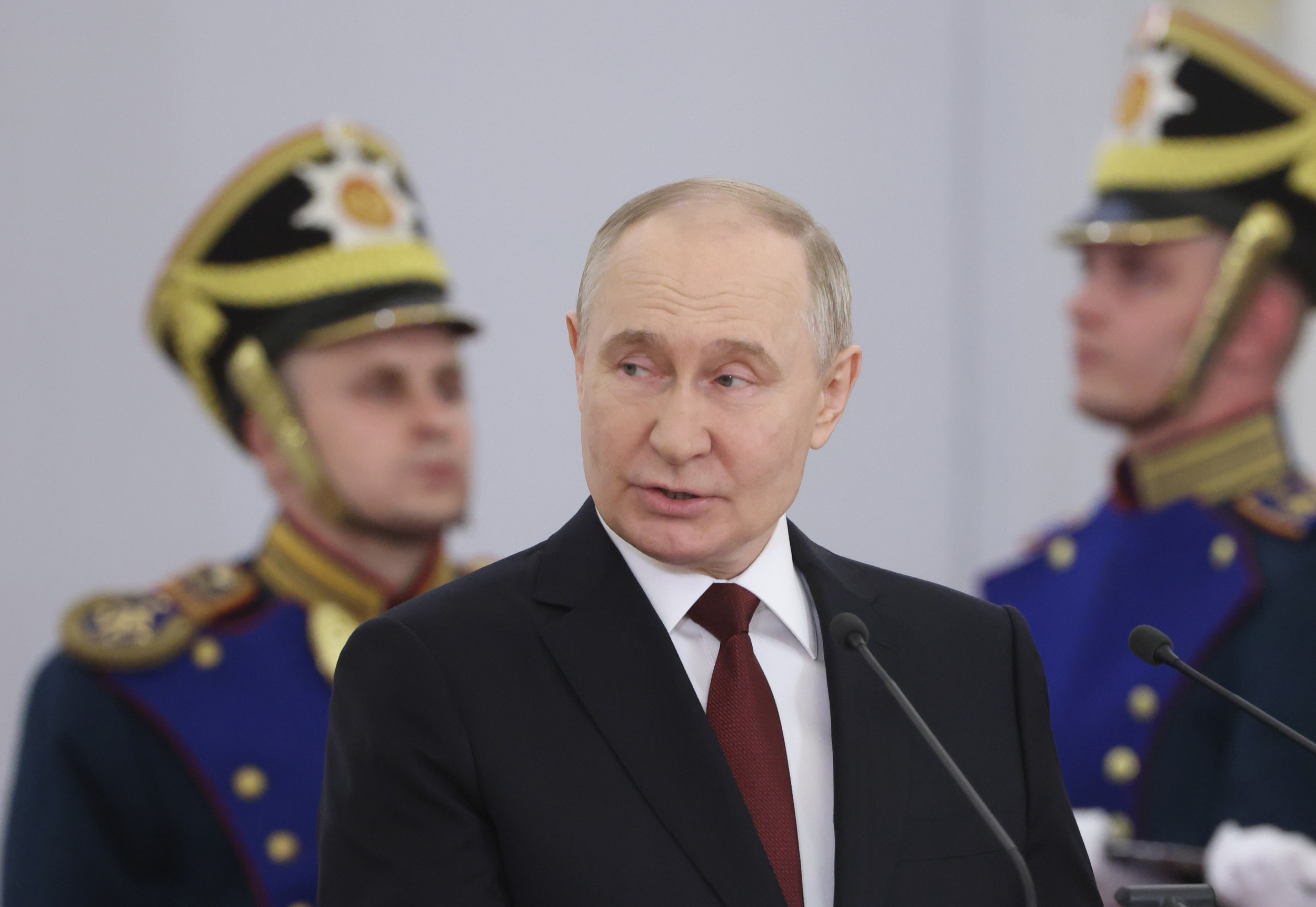Uncommon Knowledge
Newsweek is committed to challenging conventional wisdom and finding connections in the search for common ground.

Russia abruptly changed its nuclear drill scenario on Wednesday, moving it closer to NATO borders, a day after Moscow and its ally Belarus launched joint drills aimed at training their troops in tactical nuclear weapons.
Russian President Vladimir Putin ordered the military drills in May in response to what the Kremlin has described as provocative statements and threats from the West.
The Russian Defense Ministry said on May 21 that the first stage of the drills had started involving the “practical testing of the preparation and use of nonstrategic nuclear weapons” in the country’s Southern Military District.
Moscow’s second stage of drills began on Tuesday alongside Belarusian troops.
In a statement shared on Telegram on Wednesday, Russia’s defense ministry said the country’s newly formed Leningrad Military District—stationed close to Finland and the Baltic States—had also joined the nuclear maneuvers. The district was announced in February in response to Finland joining the NATO alliance.
“As part of the second stage of the exercises of nonstrategic nuclear forces, personnel of the missile formation of the Leningrad Military District are practicing combat training tasks of obtaining special training ammunition for the Iskander-M operational-tactical missile system, equipping launch vehicles with them and covertly advancing to the designated position area for training for missile launches,” the ministry announced.
It also said the Russian navy would be involved, and that crew members will be equipping “sea-based cruise missiles with training special warheads” and entering designated patrol areas.
Newsweek has approached NATO for comment.
After Putin in February signed new military decrees formally reestablishing the Moscow and Leningrad Military Districts, the Institute for the Study of War (ISW), a U.S.-based think tank, assessed that the move indicated he is preparing for a potential large-scale war with NATO in the future.
The ISW assessed at the time that the re-creation of the Moscow Military District and Leningrad Military District “supports the parallel objectives of consolidating control over Russian operations in Ukraine in the short-to-medium term and preparing for a potential future large-scale conventional war against NATO in the long term.”
The Leningrad Military District is a key component of the Russian armed forces that oversees parts of the nation’s defense strategy in Russia’s western region. The district’s involvement in Russia’s nuclear drills comes amid rising tensions between Russia and the West over Putin’s ongoing war in neighboring Ukraine.
Russia has warned that actions by the West could force it to amend its nuclear doctrine, which lays out the conditions under which it can use such weapons.
On June 7, Putin said at the St. Petersburg International Economic Forum that his country’s nuclear doctrine is “a living instrument” that can be changed.
Russia is “carefully watching what is happening in the world around us and do not exclude making some changes to this doctrine,” Putin said.
Do you have a tip on a world news story that Newsweek should be covering? Do you have a question about the Russia-Ukraine war? Let us know via worldnews@newsweek.com.
Newsweek is committed to challenging conventional wisdom and finding connections in the search for common ground.
Newsweek is committed to challenging conventional wisdom and finding connections in the search for common ground.